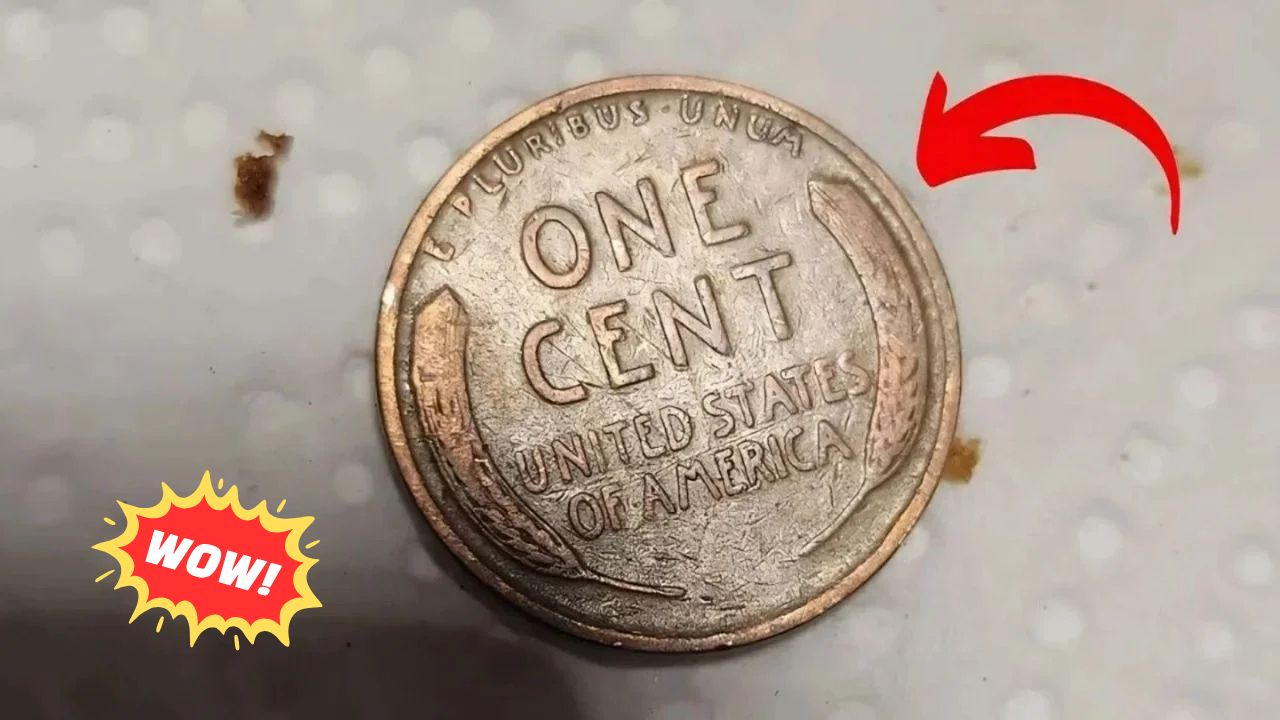The Lincoln Wheat Penny is one of the most iconic coins in American history. First minted in 1909 to celebrate President Abraham Lincoln’s 100th birthday, this humble penny has captivated coin collectors and history enthusiasts for over a century. While most Lincoln Wheat Pennies are common, some rare editions have soared in value, with one particular 1943 bronze penny rumored to be worth an incredible $1.5 million. Remarkably, some believe this valuable coin could still be found in everyday circulation.
The Historical Significance of the Lincoln Wheat Penny
Known affectionately as the “Wheatie,” the Lincoln Wheat Penny was the first U.S. coin to feature a real person — President Abraham Lincoln. Designed by Victor D. Brenner, its front side showcases a finely detailed portrait of Lincoln, while the reverse highlights two wheat stalks framing the words “ONE CENT.” This design was used from 1909 to 1958 before being replaced by the Lincoln Memorial penny.
More than just currency, the Wheat Penny became a symbol of American resilience, especially during the Great Depression and the World Wars. Its classic design and widespread use have made it a favorite among casual users and serious collectors alike.
Composition and Unique Variations of the Lincoln Wheat Penny
Most Lincoln Wheat Pennies are made primarily of copper, minted from 1909 through 1982. However, during World War II, copper was in short supply, prompting the U.S. Mint to switch to zinc-coated steel pennies in 1943. These steel pennies stand out with their distinctive silver-gray color.
But here’s where it gets fascinating: a very small number of 1943 pennies were accidentally struck on leftover copper planchets from 1942. These rare 1943 bronze Wheat Pennies have become some of the most coveted coins in numismatics.
Why Is the 1943 Bronze Lincoln Wheat Penny Worth Millions?
The 1943 bronze Lincoln Wheat Penny has been valued at roughly $1.5 million. Several factors contribute to this extraordinary price:
- Minting Error: The 1943 penny was intended to be made only of steel, but a few were struck on copper planchets by mistake.
- Extremely Limited Supply: Fewer than 20 authenticated examples exist worldwide, owned by museums, private collectors, and institutions.
- Authentication and Condition: Coins graded by trusted services like PCGS or NGC in pristine condition command the highest prices.
Could This Million-Dollar Penny Still Be Circulating?
One of the most exciting parts of this story is the possibility that a 1943 bronze Wheat Penny might still be hidden in everyday change. Whether tucked away in a jar, forgotten in an attic, or even exchanged during routine purchases, collectors dream of discovering this rare treasure among ordinary coins.
How to Identify a Valuable 1943 Lincoln Wheat Penny
If you think you may have found a valuable Wheat Penny, here are some key ways to check:
- Look at the Date: Focus on pennies dated 1943.
- Use a Magnet: Steel pennies stick to magnets; bronze pennies do not.
- Check the Color: Bronze pennies have a reddish-brown hue, while steel pennies are silver-gray.
- Weigh the Coin: Bronze pennies weigh about 3.11 grams; steel pennies weigh approximately 2.7 grams.
- Get Professional Authentication: If your coin fits these criteria, have it graded and authenticated by a trusted service.
Beware of Fakes and Altered Coins
Due to its high value, the 1943 bronze Lincoln Wheat Penny is often targeted by counterfeiters and scammers. Some counterfeiters alter the date on steel pennies to mimic the rare bronze variety. Always work with reputable dealers and certified grading services to ensure your coin’s authenticity.
Other Valuable Lincoln Wheat Penny Varieties
While the 1943 bronze penny is the crown jewel, several other Lincoln Wheat Penny editions are highly prized by collectors:
- 1909-S VDB: The very first year of issue, minted in San Francisco with designer Brenner’s initials, making it rare and sought-after.
- 1914-D: A scarce Denver Mint penny with significant collector demand.
- 1922 No D: An error penny missing the Denver mintmark.
- 1955 Doubled Die: Known for its distinctive doubled date and letters, highly collectible.
Tips for New Collectors Interested in Lincoln Wheat Pennies
If the Lincoln Wheat Penny has sparked your interest in coin collecting, here are some helpful tips to get started:
- Search Penny Rolls: Check penny rolls from banks or your personal collection for older coins.
- Organize Your Collection: Use coin folders or albums designed specifically for Lincoln cents.
- Educate Yourself: Learn about mint marks, error coins, and grading standards.
- Join a Community: Connect with coin clubs and online forums to share knowledge and get support.
Final Thoughts
The Lincoln Wheat Penny is far more than just a small copper coin—it’s a piece of American history and, occasionally, a hidden treasure. Whether you’re a veteran collector or just curious about the pennies in your jar, keep an eye out. That ordinary Lincoln Wheat Penny might hold an extraordinary story—or even be worth millions.
Frequently Asked Questions (FAQs)
What is the Lincoln Wheat Penny?
A one-cent coin minted from 1909 to 1958 featuring President Abraham Lincoln on the front and wheat stalks on the back.
Why is the 1943 bronze Lincoln Wheat Penny so valuable?
It is a rare minting error where copper planchets were accidentally used in a year when pennies were supposed to be made of steel.
How can I identify a valuable Lincoln Wheat Penny?
Check the date, test with a magnet, observe the color, weigh the coin, and get professional authentication if it matches rare criteria.
Where can I sell a rare Lincoln Wheat Penny?
Through reputable coin dealers, certified auctions, or coin shows with proper authentication and grading.
Are all Lincoln Wheat Pennies valuable?
No, but many pre-1930s and error varieties hold significant value depending on rarity and condition.
